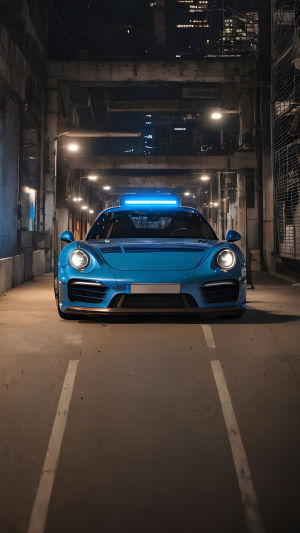The concept of a sports car encompasses vehicles with sleek body lines, low body height, excellent handling, and powerful engines. Their primary feature is the relentless pursuit of speed limits.
There are various classifications for sports cars: based on body structure, they can be coupes, convertibles, or two-door models, and based on value, they can be regular sports cars or supercars.
Supercars are characterized by a mid-engine layout, high prices, and exceptional performance. However, the pricing and performance are relative to their era. Generally, supercars' performance improves each year, so solely using performance to distinguish a supercar might not be accurate. But their performance will typically set the benchmark for their time.
Due to the mid-engine layout, most supercars are two-seaters. Some supercars also feature eye-catching designs like scissor doors, gull-wing doors, or butterfly doors. Supercars often release special racing editions or limited editions, which are rarer and more expensive than standard versions.
Here are some of the tantalizing supercar legends:
1. Lamborghini Diablo
Because the Lamborghini Countach was so outstanding, surpassing it was no easy task. Produced from 1990 to 2001, and featuring a 5.7L/6.0L V12 engine, the Diablo was Lamborghini's first series to reach a top speed of 321 km/h. Whether you prefer the early versions with pop-up headlights or the later fixed-headlight versions, there's likely a model that'll capture your heart.
2. Ferrari Testarossa
The Ferrari Testarossa is a two-door hardtop sports car. It debuted at the 1984 Paris Motor Show, leaving an unforgettable impression. This car marked Ferrari's return to the international market at the end of the 20th century and achieved impressive sales performance.
Among the roughly 10,000 Testarossa produced, only one was a convertible, painted in silver. Its wedge-shaped appearance, side slats, and pop-up headlights are all quintessential '80s Ferrari elements. The Testarossa featured a flat-12 engine with a maximum horsepower of 390 PS.
3. LaFerrari
LaFerrari is Ferrari's flagship supercar, unveiled at the 2013 Geneva Motor Show to replace the Ferrari Enzo with a limited run of 499 units. LaFerrari boasts extraordinary performance, aerodynamic efficiency, and handling, setting new standards for supercars.
It utilizes the HY-KERS hybrid system: a 6.3L V12 naturally aspirated engine producing 588 kW of power, combined with a 120 kW electric motor, delivering a total output of 708 kW. LaFerrari accelerates from 0-100 km/h in under 3 seconds, 0-200 km/h in less than 7 seconds, and 0-300 km/h in just 15 seconds, with a top speed exceeding 350 km/h.
4. Porsche Carrera GT
The Porsche Carrera GT was Porsche's first mass-produced supercar, discontinued in 2006. It boasted impressive performance: 0-100 km/h in 3.5 seconds, 0-200 km/h in under 10 seconds, and a top speed of 330 km/h.
The Carrera GT showcased typical Porsche features in its front end: an arrow-shaped hood extending backward and enlarged wheel arches on the sides, adopting design cues from the late '60s famous racing car, the 718 RS Spyder. It epitomized Porsche's craftsmanship, incorporating lightweight metals, carbon fiber, and a 5.7L V10 engine heavily derived from Porsche's racing technology. It's fair to say the Carrera GT is a road-legal racing car.
In the realm of automotive excellence, these legendary supercars etch a timeless legacy. From the Diablo's daring speed to the Testarossa's '80s Ferrari charm, and LaFerrari's groundbreaking performance to the Carrera GT's racing DNA, they symbolize the pursuit of automotive perfection across eras. These icons not only defined their time but continue to inspire the ever-evolving world of supercars.





